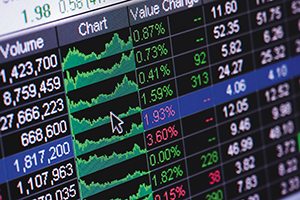Stock markets are in a state of flux with shares plunging in value as investment uncertainty returns.
Everyone is looking for the trigger that started to unsettle the markets.
The contenders include deflation worries, concerns over the spread of the deadly Ebola virus and political unrest in the Middle East and The Ukraine.
But many market experts are warning investors not to worry as some market correction was inevitable after nearly two years of rocketing prices.
Rather than knee-jerk into selling, the best course of action is to safeguard against volatility by ‘derisking’.
Derisking is managing your portfolio in a way that cushions against volatility in the markets.
Here are six strategies for derisking;
- Diversification – Split investments across bonds, equities and funds in different sectors. In the long term this pays off because one sector will take up the slack if another is taking a buffeting.
- Drip-feed investment – Financial experts will spend hours debating the benefits of lump sum versus regular investment, but in the end, regular small sums opens up pound cost averaging.
This strategy allows investors to buy more when prices are low, but less when markets are riding higher.
- Go for quality not quantity – Reliable companies plod on regardless of set-backs. Look for companies and funds built on a sound foundation of strong balance sheets and attractive dividends
- Look to the long term – You cannot do anything right now to stop prices falling, but you can make plans to lessen the impact in the future
- Don’t hold cash – Interest rates have languishes so low for so long, cash provides a miserly return. By all means keep a reserve, but even a mediocre market is returning better yields than cash
Maike Currie, associate investment director at Fidelity Personal Investing, said: “Global markets have relentlessly surged upwards for at least two years, so the big falls in the past weeks have come as a shock to some investors.
“However, investing is about taking the rough with the smooth and if we have ups, we should expect some downs as well.”
As an example, he pointed out that someone who stayed fully-invested since 1994 would have a return of 300%, but someone who tinkered and missed just the 10 best days of rising markets across the same period would have seen returns drop to 100%.
